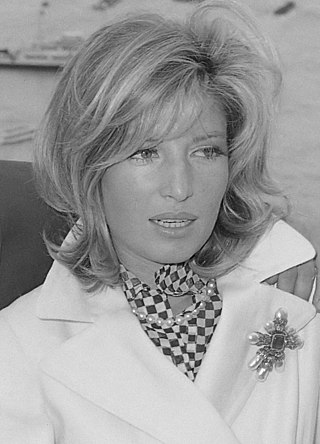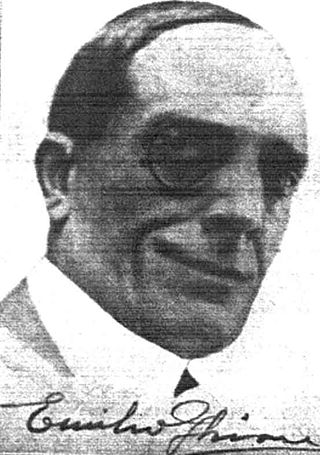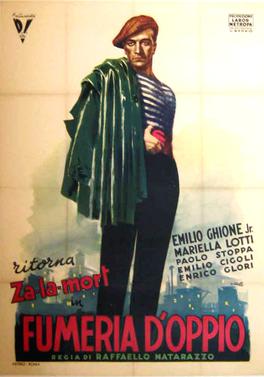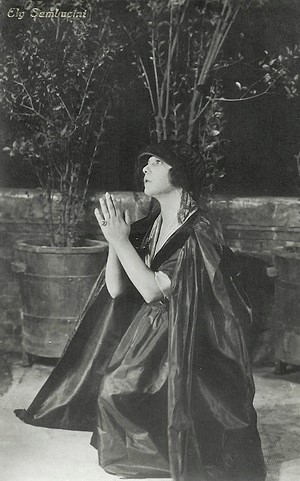Related Research Articles

Les Apaches was a Parisian Belle Époque violent criminal underworld subculture of early 20th-century hooligans, night muggers, street gangs and other criminals. After news of their notoriety spread over Europe, the term was used to describe violent street crime in other countries as well; for example, "Russian apaches."

Monica Vitti was an Italian actress who starred in several award-winning films directed by Michelangelo Antonioni during the 1960s. After working with Antonioni, Vitti changed focus and began making comedies, working with director Mario Monicelli on many other films. She appeared with Marcello Mastroianni, Alain Delon, Richard Harris, Terence Stamp, and Dirk Bogarde. On her death, Italian culture minister Dario Franceschini called her "the Queen of Italian cinema".

Alessandro Blasetti was an Italian film director and screenwriter who influenced Italian neorealism with the film Quattro passi fra le nuvole. Blasetti was one of the leading figures in Italian cinema during the Fascist era. He is sometimes known as the "father of Italian cinema" because of his role in reviving the struggling industry in the late 1920s.

Gian Maria Volonté was an Italian actor and activist, remembered for his versatility as an performer, his outspoken left-wing leanings, and fiery temper on and off-screen. He is perhaps most famous outside Italy for his roles in four Spaghetti Western films: Ramón Rojo in Sergio Leone's A Fistful of Dollars (1964) and El Indio in Leone's For a Few Dollars More (1965), El Chuncho Munoz in Damiano Damiani's A Bullet for the General (1966) and Professor Brad Fletcher in Sergio Sollima's Face to Face (1967).

Guglielmo Oberdan, was an Italian irredentist. He was executed after a failed attempt to assassinate Austrian Emperor Franz Joseph, becoming a martyr of the Italian unification movement.

Sandokan is a fictional late 19th-century pirate created by Italian author Emilio Salgari. His adventures first appeared in publication in 1883. Sandokan is the protagonist of 11 adventure novels. Sandokan is known throughout the South China Sea as the "Tiger of Malaysia".

Riccardo Dario Scamarcio is an Italian actor and film producer.

Carlo Gregorio Verdone is an Italian actor, screenwriter and film director.

Emilio Luigi Carlo Giuseppe Maria Ghione, known as Emilio Ghione, was an Italian silent film actor, director and screenwriter. Ghione was best known for writing, directing, and starring in the Za La Mort series of adventure films, in which Ghione played a likeable French Apache and 'honest outlaw'. Ghione directed, wrote, and acted in every genre of film, and directed some of the most famous stars of the time, including Francesca Bertini, Lina Cavalieri, Alberto Collo, and Hesperia. After his final film role in 1926, Ghione briefly performed on a theatrical tour of Italy. Ghione wrote three novels based around his Za La Mort character, an autobiography, and an essay on Italian Silent Cinema, before his death from tuberculosis in 1930.

Henri André Chapais, known as André Deed, was a French actor and director, best known for his Foolshead comedies, produced in the 1900s and 1910s. André Deed was one of the first named actors in cinema, and his film series based around Foolshead were a global success.

Giuseppa Iolanda Menichelli, known professionally as Pina Menichelli, was an Italian actress. After a career in theatre and a series of small film roles, Menichelli was launched as a film star when Giovanni Pastrone gave her the lead role in The Fire (1916). Over the next nine years, Menichelli made a series of films, often trading on her image as a diva and on her passionate, decadent eroticism. Menichelli became a global star, and one of the most appreciated actresses in Italian cinema, before her retirement in 1924, aged 34.

In the Country Fell a Star is a 1939 Italian comedy film directed by Eduardo De Filippo. It stars De Filippo, his brother Peppino De Filippo and Rosina Lawrence. When a famous American film star visits their small town, two brothers become obsessed with her and neglect their fiancées. It was based on the play A Coperchia è caduta una stella written in 1933 by Peppino De Filippo.

The Opium Den is a 1947 Italian crime film directed by Raffaello Matarazzo and starring Emilio Ghione Jr., Mariella Lotti, and Emilio Cigoli. It was an unsuccessful attempt to revive the Za La Mort character, who had been a popular figure during the silent era. Ghione jr. was the son of the actor Emilio Ghione who had originally played the role.

Saint John, the Beheaded is a 1940 Italian comedy film directed by Amleto Palermi and Giorgio Bianchi and starring Totò, Titina De Filippo and Silvana Jachino. It was based on a play by Nino Martoglio. The film was made at the Cinecittà Studios in Rome.
Pierrot the Prodigal is a 1914 Italian silent film directed by Baldassarre Negroni and starring Francesca Bertini, Leda Gys and Emilio Ghione.
The Fiery Cavalcade is a 1925 Italian silent film directed by Carmine Gallone and starring Emilio Ghione.
Broken Idol is a 1913 Italian silent film directed by Emilio Ghione and starring Francesca Bertini, Angelo Gallina and Alberto Collo.

Za La Mort is a 1924 German-Italian silent action film directed by Emilio Ghione and starring Ghione, Fern Andra and Magnus Stifter. It is part of a series of silent films featuring the pulp hero Za La Mort.
Latest Night News is a 1924 Italian silent action film directed by Emilio Ghione and starring Ghione and Kally Sambucini. It is part of the long-running series featuring the gentleman thief Za La Mort, who in this film takes on the role of an investigative journalist.

Kally Sambucini (1892–1969) was an Italian film actress, known for playing the female sidekick Za La Vie in the Za La Mort series of action films alongside Emilio Ghione.